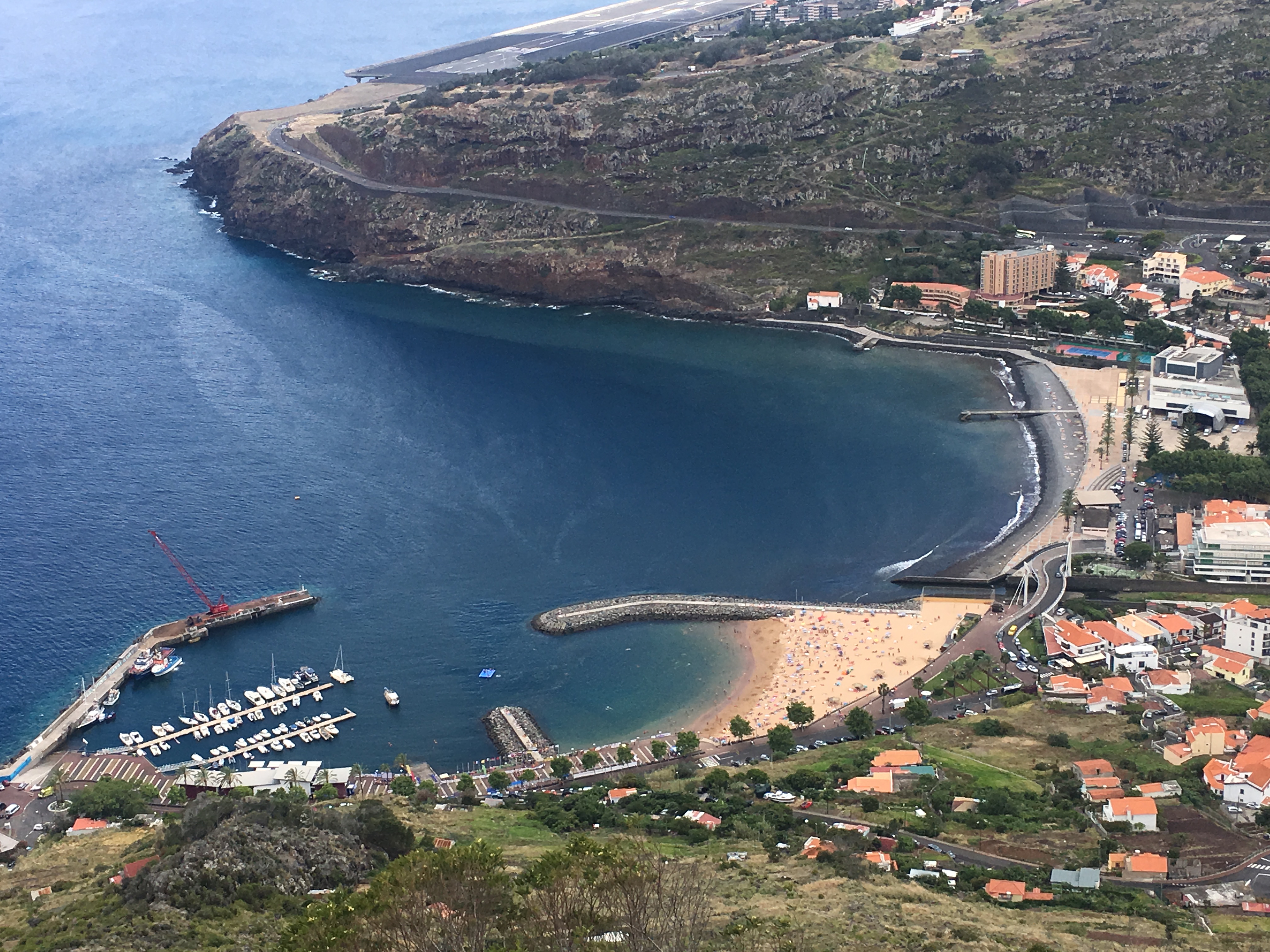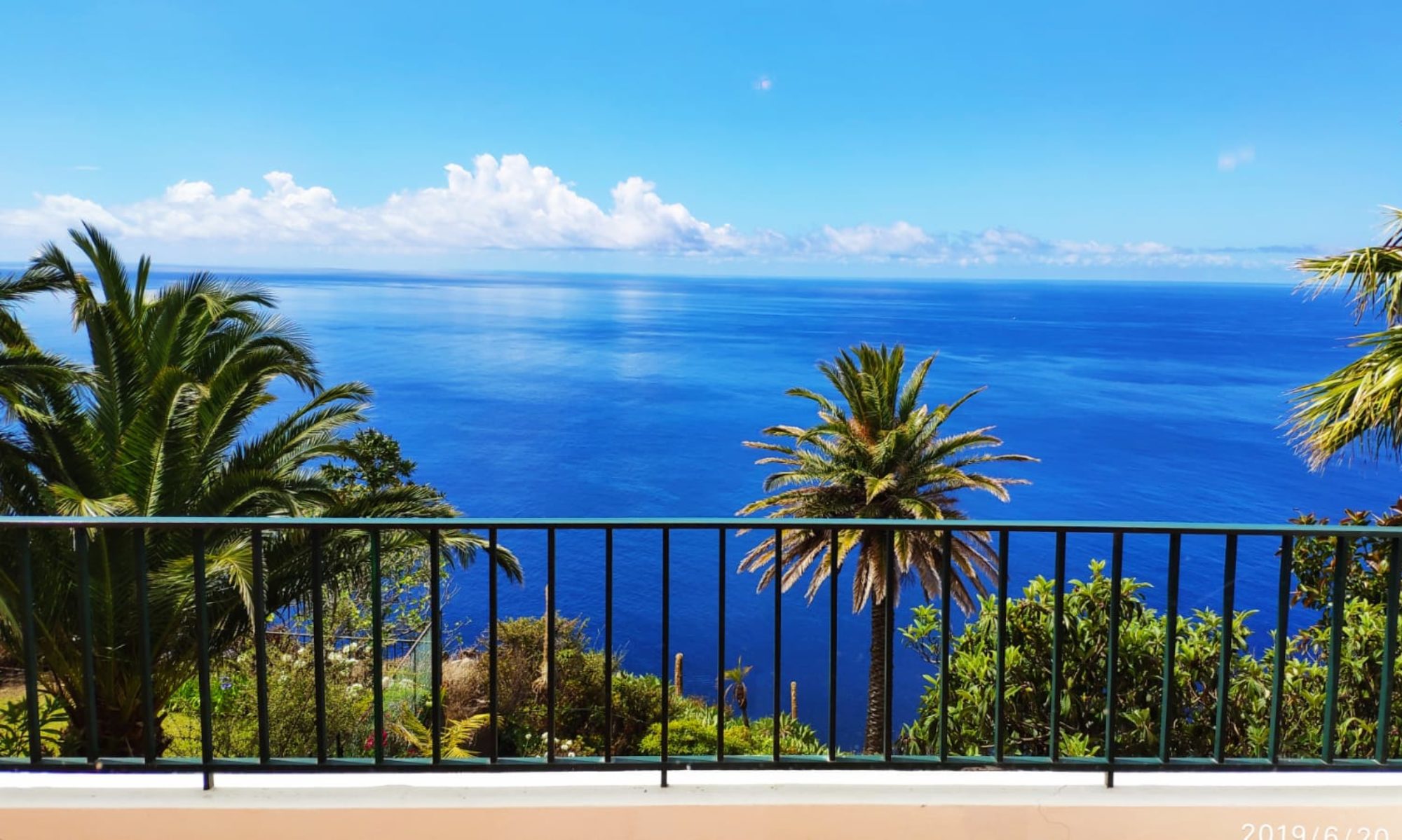
The bus company “Sociedade de Automóveis da Madeira” (SAM) operates between Funchal and several towns in the eastern part of Madeira, namely in Caniço, Santa Cruz, Machico, Santo da Serra, Porto da Cruz and Baia d’ Abra (Caniçal). The company has a very useful website, as well as an app which you can load down on your iphone or ipad. The app will allow you to enter your starting point and your destination and will give you the time of the next bus. It also has the timetables for all the buses.
You can load down the app from the company’s website.
The bus terminal in Funchal for the SAM buses is the Funchal Edificio 2000.
Caniço and Garajau are served by the Empresa Automvéis do Caniço (EACL) company.
Garajau

Getting There (EACL bus line)
155 PONTA DA OLIVEIRA – FUNCHAL
The Cristo Rei da Ponta do Garajau is about a kilometres from the village of Garajau – you will have to get off the bus at the Garajau village and walk down to the statue and cable car area. It is in this area that you find the striking statue of Christ the King, and also a cable car going down to the Garajau sea nature reserve, with its pristine clear waters.

If you want to go down to the beach you can either go by car(winding, narrow road, sometimes closed) or cable car (recommended). There is a restaurant on the beach which has stunning views of the volcanic cliff sides. Sun beds may be hired, and shoes that you can wear in the water are recommended as the beach is very rocky.
The Caniço Beach / Reis Magos

This beach has an enclosed area (surrounded by rocks) for swimming. There is a fairly long promenade for walking and two beach restaurants – Restaurante Praia dos Reis Magos and Nova Onda (recommended). It is a pleasant place to stroll in the evenings or sit at one of the restaurants and watch the sun go down.
There is also a diving centre here:
Beach Facilities (Blue Flag (2019))
- Showers
- Toilets
- Life Guards – from 1 June – 30 September
Santa da Cruz
Proceeding from Caniço is the town of Santa da Cruz, which is one of the oldest in Madeira.
The mother church, the Igreja Matriz de Santa Cruz, was built in the 16th century as a result of a request to the king, D. Manuel I, since the existing church no longer housed the population of that time. The church, in Gothic-Manueline style, is one of the most interesting churches outside Funchal. The striking bell tower features stonework on it four corners, with the top of the tower being an eight-sided pyramid. Above the bells are the clocks.
Beach and Swimming Facilities
Santa da Cruz has extensive swimming facilities.
Palmeira Beach
Beach Facilities (Blue Flag (2019))
- Showers
- Toilets
- Life Guards – from 1 June – 30 September
- First Aid Centre
- Paddling Pool and main pool
- Restaurant
Machico

Getting There (SAM bus line)
23Machico
78 Faial
113 Caniçal
156 Maroços
Machico is the second largest town in Madeira, and was where the Portuguese discoverers first landed. It is a pleasant place to spend a day. Apart from being one of only two places in Madeira which has a sandy beach, it is a beautiful town surrounded by high mountains and has a coastal promenade.


This monument stands above the beach. The plaque alongside the monument, relates the legend of the lovers Robert Machim and Ana D’Arfet an English couple who ran away from Britain and landed in Madeira, prior to the discovery of the island by the Portuguese. The monument was built to distinguish the brave landing of the heroic Portuguese sailors and the Portuguese discoverers Bartomoleu Pirestrelo and Zarco.
Machico also has some interesting old churches – the São Roque chapel is located on the west side of the town, along the seaside promenade. It was built in 1489 by the son of the discoverer of Madeira, Tristan Vaz Teixeira.

The parish church of Machico, the Igreja Paroquial de Machico, was built in the 15th Century and features architectural influences from several periods, including Gothic, Manueline and Baroque elements. The interior contains richly adorned chapels while the main doorway is composed of grand Gothic archivolts and marble pillars with a circular stone window above.
The Capela das Milagres (Chapel of Miracles) was originally built in 15th century and is the site of the first Mass in Madeira, but the original chapel was destroyed in the floods of 1803. A treasured crucifix from the chapel was washed out to sea, but miraculously found. Every year in October, in the Festival of Lights this drama is re-enacted in an extraordinary procession, when the people proceed silently through the streets holding torches and carrying the crucifix.
The chapel now standing was rebuilt in 1883.
Three annual events worth attending in Machico are the following:
Machico’s Fifteenth Century Market (June)

This festival is held every year in June and re-enacts the first settlement in Madeira. It is loads of fun with different stalls, people dressed in the late medieval costume, open air performances of traditional trades, dancing and entertainment which would have existed in this period. Food stalls sell a variety of traditional food mainly existing at the time.
Machico’s Gastronomic Week (August)
Promoted by the Municipality of Machico this event has as main objective promoting the regional cuisine, in particular the delicacies of this municipality. This year the gastronomic festival will be held between July,26th to August 4th.
The event also offers a lot of entertainment, live music and musical attractions at the regional and national levels, for a week full of flavours, snacks and typical food from the seaside.
The Festival of Lights (9th October)

This festival is to commemorate the restoration of the statue “Our Lord of Miracles” which was restored to Machico after it had been swept out to sea during the floods of 1803, and then miraculously found by a passing ship. Each year during the 9th October, a moving ceremony is performed during which the statue is carried through the streets of Machico.
Caniçal

The fishing village of Caniçal was once the centre of the whaling industry in Madeira. It is a pictureque village with a seaside promenade, a public swimming pool bordering the beach, a whale museum and a number of good fish restaurants.
The Festa de Nossa Senhora de Piedade
On the third weekend of every September one of the most important feasts of the island takes place in this village – the Festa de Nossa Senhora de Piedade (The Feast of our Lady of Pity). On the Saturday of the feast, the fishing boats proceed in flotilla from the harbour in Caniçal to fetch the statue of Our Lady which resides in the Capela da Senhora da Piedade located on Monte Gordo. This chapel is found some kilometres away from the fishing village of Caniçal. The fishing boats are open to the public free of charge, and hordes of people clamber on to the boats in great spirits to take part in the festivities. The boats are decorated with palms and rosettes, with the lead boat, which is to carry the statue back, more highly decorated than the rest.
When the boats reach Quinta de Lourde, all the boats apart from the lead boat proceed towards the São Lourenço point of the island and then anchored. Sandwiches and cool drinks were handed out free of charge. On some of the boats rope ladders were let down into the sea and people proceeded to dive in. The whole event is marked by a happy go lucky attitude rather than strict attention to regulations, although the marine police were actively patrolling on speed boats, in case anyone got into difficulties.
With the statue of Our Lady safely on board all the boats proceed back to Caniçal. The whole excursion lasts about four hours. The statue is taken to the church in Caniçal where it resides overnight and is then taken on the next day back to the Chapel of Senhora de Piedade by sea once again.
This popular feast, and indeed the building of the chapel of Senhora de Piedade , is said to have its origens in a storm at sea when the fishermen at sea, who had been praying to our Lady, decided to build the chapel in thanks for their safe deliverance. According the the historian João Adriano Riberio (author ot the work “Excursions in Madeira (1891)) until the 19th century the procession took place by land and after which the marine procession became popular.

